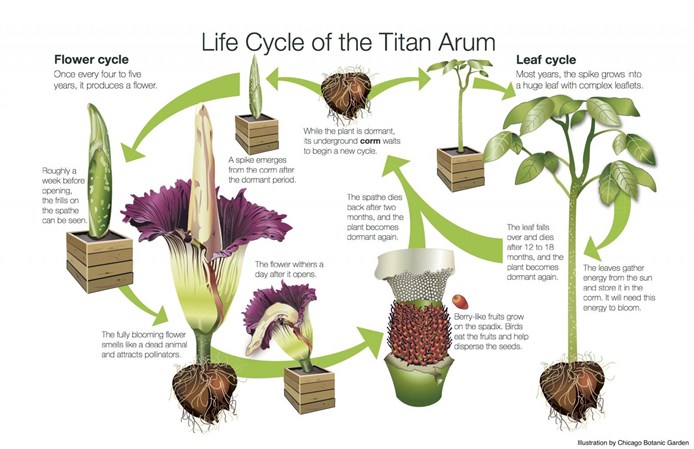Giant corpse flower, Fester, expected to bloom
Monday September 25, 2017
|
UPDATE, 10/17: Fester kept us in suspense over the past few weeks and though it seemed like a full bloom was on its way, it is a very rare event and we can never say with 100% certainty that it will happen. We did have a lot of fun watching this titan of the plant world grow so quickly, and hope you enjoyed following along. |
Visitors to Franklin Park Zoo will have the opportunity to see, and maybe even smell, giant corpse flower, Fester. The Amorphophallus titanum earned the nickname “corpse flower” due to its pungent aroma like that of a rotting carcass. The flower uses its foul fragrance to attract pollinators, particularly carnivorous insects.
Seeing a bloom is a rare event, as blooms last for only 24 - 48 hours, and these exotic flowers go many years between blooms. Fester, who is on exhibit in the Tropical Forest, is expected to bloom soon. We cannot predict the bloom date with absolute certainty; this estimate is based on Fester’s previous growth charts.
Originating from Sumatra, corpse flowers have demanding environmental requirements, and conditions must be just right for them to bloom. They are noted for rapid growth particularly as they near bloom, which can be 4 to 5 inches a day. These are among the most gigantic of flowers – blooms are potentially 9 feet in height and 6 feet across.
Fester is one of seven corpse flowers at Franklin Park Zoo. The other plants are currently off exhibit in the Zoo’s greenhouse. This will be Fester’s third bloom; he previously bloomed in 2012 and 2014.
Follow us on Franklin Park Zoo’s social media channels, Facebook (/franklinparkzoo), Twitter, Instagram and Snapchat, using #bloomwatch to watch the plant’s development.
Illustration by Chicago Botanic Garden


